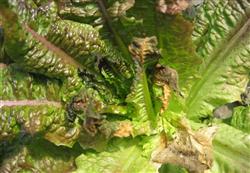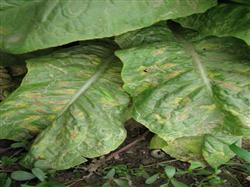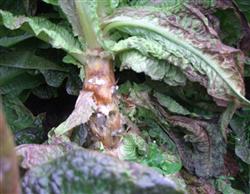Lettuce planting techniques: what is lettuce gray mold?

What is lettuce gray mold? What harm does lettuce gray mold have? How to prevent and cure lettuce gray mold? Please give guidance on lettuce gray mold is a common and harmful disease of lettuce. The disease not only harms lettuce, but also harms more than 20 kinds of vegetables and other crops, such as tomato, eggplant, pepper, cucumber, watermelon and so on. The year of low temperature and continuous overcast and rainy weather is serious, which often causes lettuce leaf yellowing and death, stem rot, serious plant death, seriously affecting the yield of lettuce. The harm of lettuce Botrytis cinerea: lettuce gray mold mainly harms leaves and stems. There are two main types of leaf disease spots: one occurs from the leaf tip or leaf edge, forming brown wet rot irregular disease spots, sometimes showing a "V" shape or semicircle, and the other disease spot occurs from inside the leaf, showing a near circle. The disease spot of Botrytis cinerea is generally large, with obvious wheel lines, and it is easy to break when the humidity is low. The disease spot on the stem showed light brown water immersion at first, and brown rot was formed after expansion in the later stage. the leaves connected with the stem spread forward along the petiole from the petiole to form dark brown spots, and finally the whole plant gradually withered and died. The gray mildew layer (conidiophores and conidia) is produced on the surface of the disease when it is wet. Control methods of lettuce gray mold: 1. Ecological control methods: greenhouse and greenhouse adopt measures such as reducing daytime temperature, increasing night temperature and increasing daytime ventilation time to reduce humidity and dew time in greenhouse to achieve the purpose of controlling the disease. After rainfall in open field cultivation, it should be drained in time to reduce humidity. 2. Agricultural prevention and control methods: reasonable control of watering water, not too much watering at one time, in order to prevent excessive humidity. Remove the diseased leaves in time, take them outside the shed and burn them or bury them deeply. 3. Chemical control methods: as soon as sporadic diseased leaves are found, start spraying 1000 times of 50% carbendazim wettable powder, or 1000 times of 50% sclerotia net wettable powder, or 50% carbendazim wettable powder, or 1000 times of 50% isobarbamide wettable powder, or 1000 times of 25% carbendazol EC. Spray once every 7 to 10 days, for 3 times in a row. Greenhouse can also be 667 square meters (1 mu) with 20% thiabendazim 0.3-0.5 kg fumigation, the control effect is more ideal. Click to get more lettuce planting techniques click to get more vegetable planting techniques
- Prev

Lettuce planting techniques: how to control lettuce downy mildew?
How to prevent and cure lettuce downy mildew? Please introduce the method of lettuce downy mildew is a common disease of lettuce, which occurs everywhere. Lettuce downy mildew is mainly caused by flagellum subphylum downy mildew. It is generally harmful to the leaves of crops. Lettuce leaves with downy mildew, the disease spots are yellow and nearly round spots.
- Next

Lettuce planting techniques: how to control Sclerotinia sclerotiorum of lettuce?
What are the hazards of Sclerotinia sclerotiorum of lettuce? How to control Sclerotinia sclerotiorum of lettuce? Please introduce the harm of Sclerotinia sclerotiorum of lettuce: after the plant is susceptible, the petiole near the ground first shows beige rot, then the leaves wither, and then the whole plant rotts. When the humidity is high, the disease produces white cotton wool, and later produces black rats inside and outside the stem.
Related
- Where is it suitable to grow horseradish in China? it is expected to see the middle altitude horseradish in Alishan.
- How to prevent tomato virus disease reasonably? (Control methods included)
- Many people like to plant towel gourd on the balcony. What are the main points of this method and management?
- What crops can chili peppers be mixed with?
- Fertilization techniques and matters needing attention in Tomato
- What are the grafting techniques for peach seedlings in spring?
- Harm and control methods of root swelling disease of Chinese cabbage
- What are the pests of sweet potatoes? How to prevent and cure it?
- Symptoms, causes and Control methods of navel Rot in Tomato
- The cause of "Cucumber rotten bibcock" in Farmers' planting Cucumber and its Control Plan

